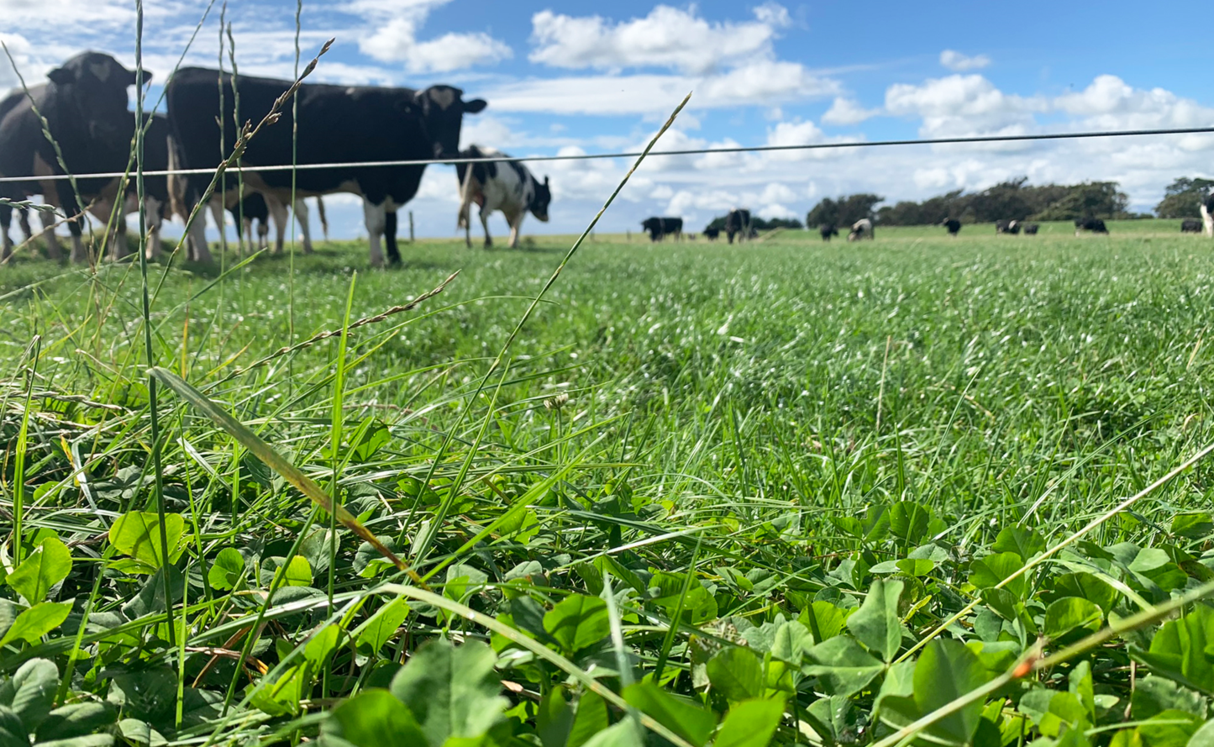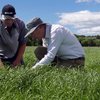Same as the old boss, but better
If there was a World Cup for pastoral farming, New Zealand would...
If there was a World Cup for pastoral farming, New Zealand would win every time. Not because of our amazing animals or our unrivalled skills. Not even because we produce exceptional food.
No, the reason we’d win is right under our feet. It’s in every leaf, stalk and stem of energy-rich forage growing on every farm in the country. Home grown feed is the absolute boss of our business; always has been and always will be.
All we have to do is keep it coming in the decades ahead, no matter what changes and challenges arise. The exciting news? Our plant breeders are tooled up and on task.
First principles
Natural. Adaptable. Flexible. Sustainable. Efficient. Nothing beats home grown feed. With each mouthful of pasture and crop produced and consumed on farm, costs go down, profits go up.

Best of all, it’s a resource you can manipulate and adjust to suit your needs. Even something as simple as tweaking when and how you graze a pasture or crop, for example, can reward you and your animals handsomely.
Take control of how much you grow and harvest straight into your animals, and stronger business resilience comes along free of charge.
Situational awareness
Farmers wrote the book on business agility. Even so, there’s so much pivoting required these days it’s a wonder we don’t all have whiplash.
Adapting to increasingly erratic weather is a job in itself. That’s without even considering the complexity of balancing social licence, environmental stewardship, animal well-being and market expectations.
Against all this, how can home grown feed help make sure we’re still the world champions of pastoral farming in 2040?
Cool as
Warmer temperatures under a changing climate offer the chance to grow more during the cooler months of the year. So pastures that flourish in cool conditions will brighten your future many times over.
Anything that grows well when days are short sucks up excess soil nutrients, like nitrogen, at a time of high risk for loss to the environment. Responsible nutrient management – tick.
Chosen carefully, they’re prolific and nutritious, so that’s the animals taken care of too. Growing and grazing more feed on every hectare – a tick for emission efficiency.
In some regions, as summer and autumn turn drier and hotter, cooler months of the year are already becoming a much more reliable time for growth. Climatic resiliency – tick.
Where winters are trending warmer, cool season pastures will support autumn lambing and calving. Another tick for climatic resiliency!
Here at Barenbrug we’ve already created pastures that shine in winter. We’re not about to stop now.
.jpg?height=532&width=709)
Mercury rising
Warmer summers, particularly in the upper North Island, are putting traditional pasture species like ryegrass under greater pressure. Less persistence and more frequent renewal consume time, money and fossil fuel. And let us not forget the emissions…
So summer strength is also a big part of your home grown pastoral farm system of the future.
Robust ryegrasses bred for harder conditions are making a difference. But what about farms where even strong ryegrass struggles? Cue species we already know and respect for their summer survival skills, re-imagined and made better, like cocksfoot, pasture brome and tall fescue, bulked up with delicious legumes like white and red clover.

Here we are looking to our Barenbrug colleagues in places like Australia and Brazil for tropical plant genetics with the summer performance to help New Zealand farmers thrive in coming decades.
Palate pleasers
Home grown is only half the story. Happily eaten, easily digested and transformed into high quality protein is the other half.
Content, well-nourished, healthy animals are fast growing, efficient animals. What do New Zealand sheep, cattle, cows and deer love to eat, and why? How can we make what we grow irresistible to them, and super easy to self-harvest?
They can’t tell us in words, so we’re watching what and how they eat in trials testing new pastures for high intake and animal preference.
This is a new area of research using tools like genomic selection, to identify what genetics taste best; and near-infrared spectroscopy, to better understand how plant structure affects intake and preference.
Start now
You can start planning how to grow and utilise more feed at home straight away. Autumn is a great time to review your whole farm system with this goal in mind. We are here to help. For personal advice, book your free Pasture Health Check today at Barenbrug - Superior Pastures // Book a visit




